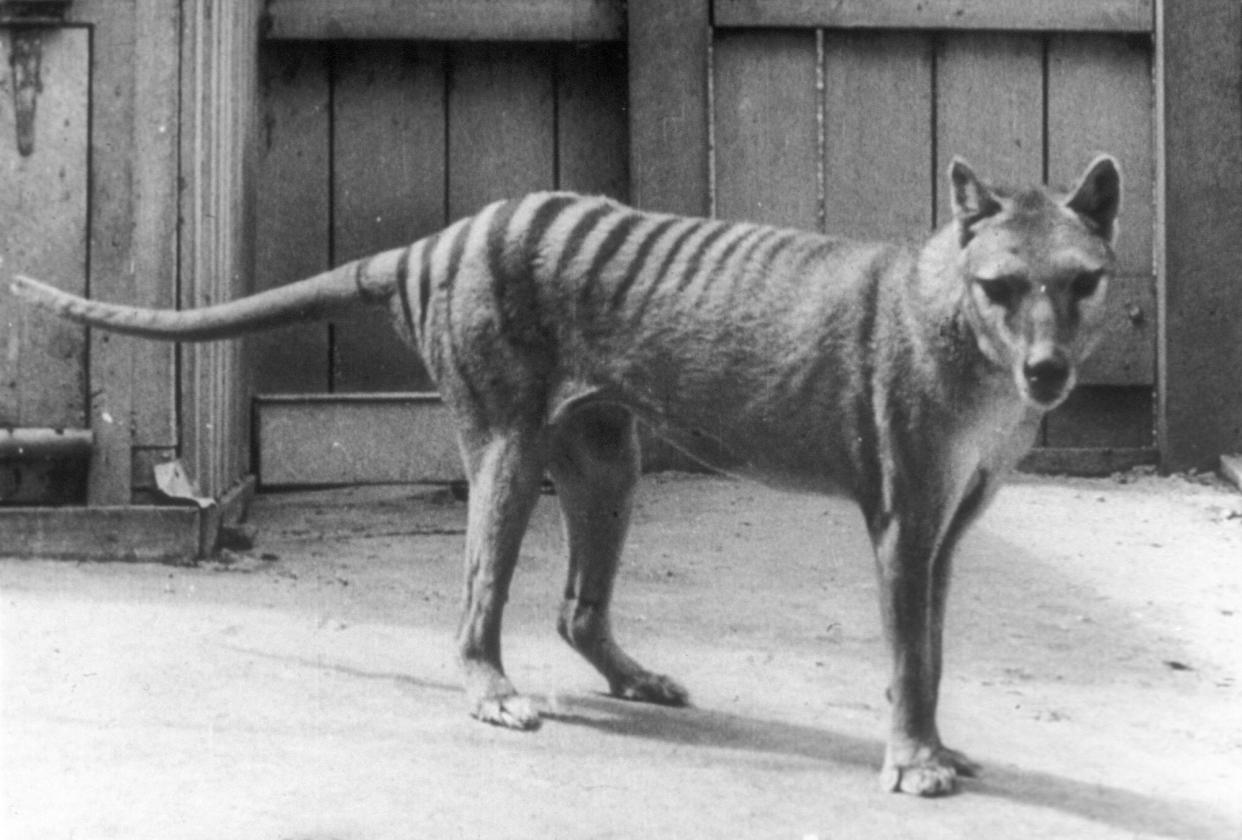Scientists Are Exploring How to Bring the Tasmanian Tiger Back from Extinction

Dave WATTS/JACANA/Gamma-Rapho via Getty
The Tasmanian tiger could start roaming the outback again.
According to BBC News, scientists from the U.S. and Australia are undertaking a multi-million dollar project to revive the Tasmanian tiger population. The species went extinct in the 1930s.
Officially named the thylacine, the species is commonly referred to as the Tasmanian tiger for the stripes on its back. However, the animal was not a big cat. Tasmanian tigers were classified as marsupials.
Funded by a partnership between the University of Melbourne and Texas-based company Colossal, the project claims it can recreate the extinct species, per BBC News, with researchers saying they could reintroduce the thylacine into the wild in the next ten years.
"I now believe that in 10 years' time we could have our first living baby thylacine since they were hunted to extinction close to a century ago," Professor Andrew Pask of the University of Melbourne, who is leading the project's research, said.
RELATED: Ecologists Worry Wildlife Has a 'Bleak Future' as Australia Fires Propel Extinction Crisis

TORSTEN BLACKWOOD/AFP via Getty
BBC News reported that the project plans to extract stem cells from a living marsupial species with DNA similar to the Tasmanian tiger and use gene-editing technology to bring the extinct animal (or an extremely close approximation of it) back to life.
The Tasmanian tiger population first declined when humans arrived in Australia tens of thousands of years ago and again when a wild dog species known as the dingo appeared.
After this, the marsupial only roamed free on the island of Tasmania until they were hunted to extinction. The last captive Tasmanian tiger died at the Hobart Zoo in 1936.
RELATED: Half a Billion Animals, Including 8,000 Koalas, Feared Dead from Devastating Australian Wildfires
According to BBC News, bringing back the extinct animal would require several scientific breakthroughs and mark the first "de-extinction" event in history if successful.
Experts outside the project are skeptical the project will work, calling "de-extinction" a matter of science fiction.
"De-extinction is a fairytale science," Jeremy Austin from the Australian Centre for Ancient DNA told the Sydney Morning Herald, adding that the project is "more about media attention for the scientists and less about doing serious science."

 Yahoo Movies
Yahoo Movies 
